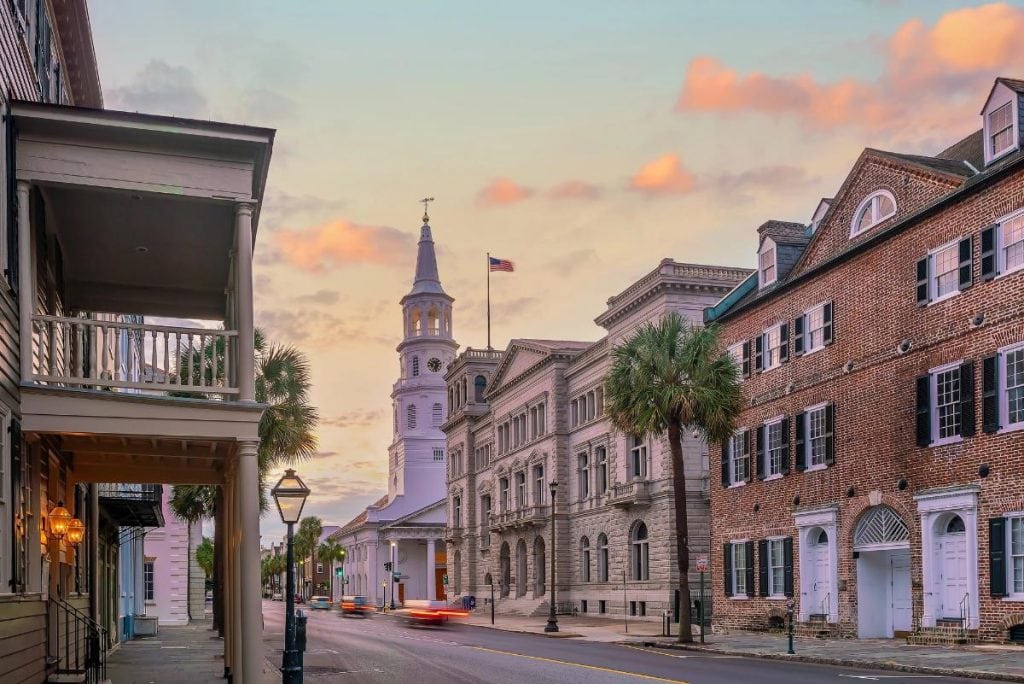
Charleston, SC, is a great place to live. This historically rich city at the heart of South Carolina has all you need to live a happy and comfortable life. It’s also among the safest places to live in the country. The southern part of Charleston boasts a low crime rate, and so do other parts of the city. If you’ve been mulling over moving to Charleston, SC, here’s everything you need to know before taking the leap:
Charleston, SC: Historical Summary
English colonists established the City of Charleston in 1670, naming it after King Charles the Second. It was initially called Charles Towne but has also had two other names in 113 years: Charles City and Charles Port. The city officially became Charleston in 1738.
Charleston was South Carolina’s first capital city before losing its status to Columbia due to its more central location. The city is also home to the country’s first golf club in Harleston Green and the first battleground of the American Civil War.
Besides that, Charleston has well-preserved historical houses and exhibits where visitors can learn about the city’s history. The Patriots Point Naval and Maritime Museum, on the other hand, features historic ships like the USS Yorktown, a World War II aircraft carrier, allowing visitors to explore naval history hands-on.
What’s the Weather Like in Charleston, SC?
Since Charleston is located on the East Coast, the weather can sometimes be unpredictable but rarely unpleasant. In terms of rainfall, the city experiences, on average, about 44.26 inches of rainfall. This amount is much higher than the national average of 30.21 inches.
The temperatures are mild throughout the year, ranging between the 50s and 70s. However, during the summer, temperatures may reach highs in the upper 80s and winter lows of 40s. Daylight in the city stretches later into the day. Sometimes, the sun goes down as late as 8:30 PM.
The Demographic in Charleston
Charleston is a diverse mix of patriotic, hard-working residents from different cultural backgrounds. The city has thriving neighborhoods and a vibrant housing market accommodating different budgets. Getting a sense of the area’s demographic will give you a good idea of what to expect once you move in.
In terms of age, the city is mostly composed of young and middle-aged adults. Only 15% of the population is over the age of 65, and 15% of the population is below 18 years old. This leaves 70% of the population within the 19- to 64-year-old bracket. Genders are almost evenly split in Charleston, but women have a higher population at 53%.
Charleston is the biggest city in South Carolina, with about 156,868 residents. Racially, the city is mostly composed of whites, who make up three-quarters of the population. Black people make up slightly above 20% of the city demographic, while Asians and Hispanics make up the smallest percentage of the population.
Charleston’s residents are very educated. Half the population holds bachelor’s degrees, and almost 95% have graduated from high school. The city also has many high-ranking colleges and other educational institutions.
Best Places to Live in Charleston, SC
Here are some of the best places to live in Charleston city:
Mount Pleasant
As the name implies, Mount Pleasant is a pleasant place to live in Charleston. It has a population of about 92,000 and is among the most densely populated regions in Charleston. Mount Pleasant is located just over the bridge from downtown Charleston. It has many restaurants, shopping malls, and recreational amenities like the Waterfront Park. It’s also quiet and has beautiful homes in the backdrop of Mount Pleasant.
West Ashley
West Ashley is Charleston City’s oldest suburb. It’s an ideal neighborhood if you’re looking to stay close to downtown Charleston but are on a budget. The neighborhood is a mix of old mid-century homes and new commercial developments. It has lots of green spaces and scenic waterways where residents can go fishing, kayaking, and bird-watching. You’ll love it here if you’re looking for a retirement home. That’s because it has a laid-back atmosphere and is close to several amenities and healthcare centers.
Johns Island
This is the largest island in Charleston, and like West Ashley, it’s close to the city’s downtown area. It’s an attractive area for middle-aged home buyers, especially young professionals. It’s also a great place to live for surfers and beach lovers since it borders Seabrook and Wadmalaw islands, renowned for surfing and beach sports.

How to Get Around Charleston
Charleston is an expansive city with 918 square miles of land area. Here are a couple of ways to get around in the city:
- Buses: The city runs multiple buses, which provides an affordable way for residents to get around the city. The fare is only $2 per ride, and you can buy your passes online to save you the hassle once you get onboard.
- Shuttles: DASH (Downtown Area Shuttle) is a free shuttle service in Charleston. It’s a more affordable way to get around the city and helps you avoid hefty parking fees. It also covers all the crucial locations in the city’s metro area.
- Water taxis: This isn’t actually a way to get around the city, but it’s a fun way to explore Charleston’s waterways. For only $12, you get an all-day pass to visit the city’s popular waterways, including the Waterfront Park and the Maritime Center.
Moving to Charleston Is the Right Move
Moving to Charleston is a step in the right direction and a decision you won’t regret. The city has friendly people, great amenities, and many beautiful homes. Therefore, you’ll definitely enjoy living here. You just need to explore different neighborhoods and find a suitable home for you and your family.
Remember, you should always do your due diligence before buying a new home. Check to see whether the property has any defects and if it’s in a safe neighborhood. You can always seek the help of an experienced attorney to conduct due diligence and help you navigate the complex documentation that comes with buying a house.
